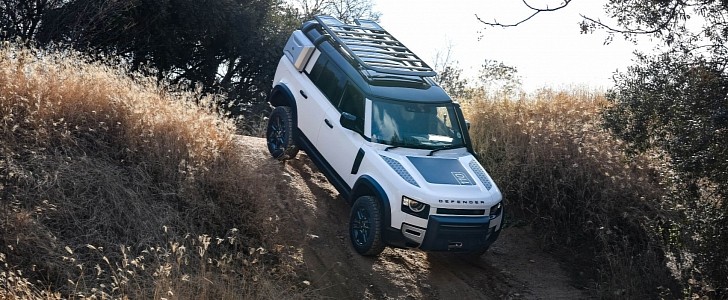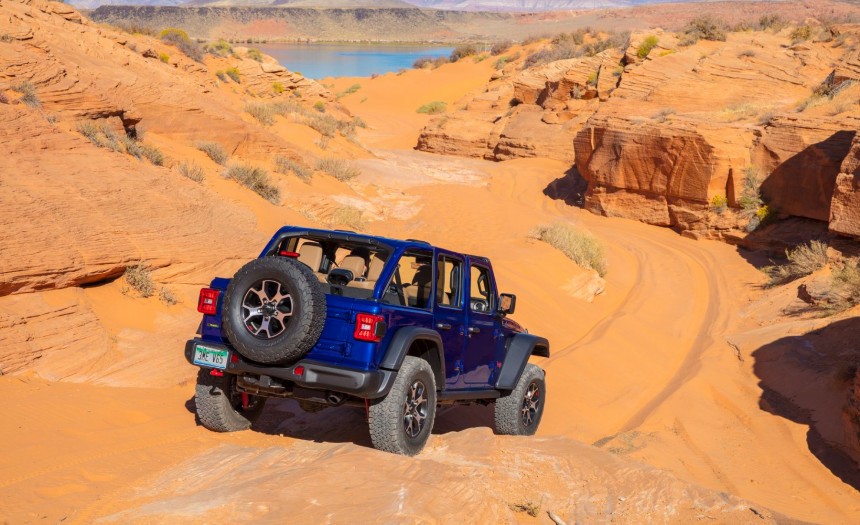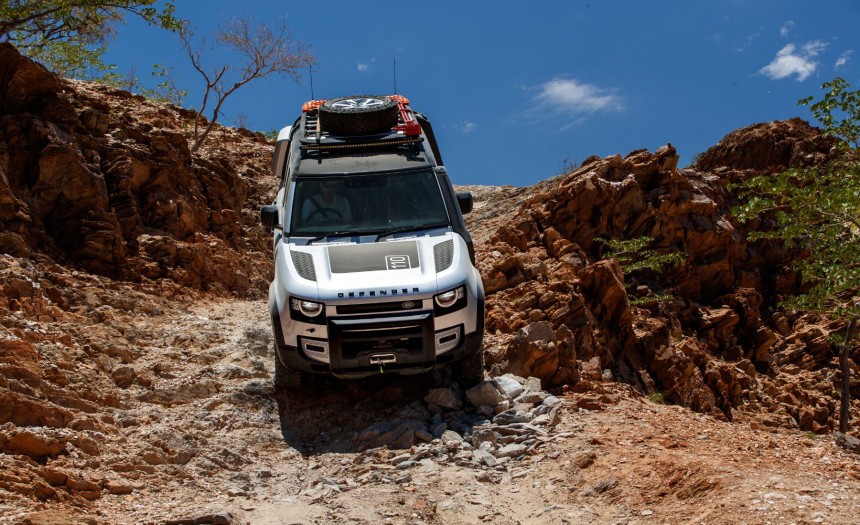For more than twenty years, Hill Descent Control has helped drivers tackle steep descents safely and has become available on most modern off-roaders, crossovers, SUVs, and trucks sold today. In this article, we’ll explore how it originated, how it works, and why it has become so widely used.
If you never drove a vehicle with Hill Descent Control (HDC) or haven’t gotten the chance to use this system, imagine you’re exploring some trails, and you get to a point where the only way forward is down a steep hill.
In a vehicle without this feature or low-range gears, controlling such a dangerous descent would be extremely difficult, especially if the terrain is loose, wet, or covered in snow. To maintain a safe speed, you would have to masterfully work the brake pedal while praying that the vehicle doesn’t lose traction.
Fortunately, HDC was invented to help those who find themselves in similar situations. Developed by German tech giant Bosch, the system was first introduced on a production vehicle by Land Rover, which equipped the first-generation Freelander model, a compact off-roader that lacked the low range gears usually found on capable 4WD vehicles.
The first version wasn’t perfect, with many owners claiming that the default speed at which the vehicle descended was far too high for a safe and controlled descent in extreme conditions. They also argued that even the slightest touch of the brake pedal would instantly disengage the system.
Despite this, it quickly made its way on other Land Rover models and the first-gen BMW X5, as the German company owned the Rover group at that time. Currently, it’s used by most manufacturers on their off-road capable vehicles.
The system can be compared to conventional cruise control, a feature that controls acceleration, maintaining vehicle speed at a threshold selected by the driver.
Like cruise control, HDC maintains a preset speed when going down a slope, eliminating the need for driver input. The difference is that this system automatically engages the brakes and can be used only at low speeds.
The way it works is similar to how traction control and electronic stability control work. Like these systems, HDC operates in conjunction with the vehicle’s ABS module to automatically engage the brakes, maintaining a constant, safe speed. Each wheel can be independently locked up or released so that the vehicle maintains traction.
Generally, to use this system, the vehicle must travel below a certain speed and approach a descent. In most vehicles, a warning light or notification will signal the availability of the HDC, and the driver must engage it manually by pressing a button or a rocker switch.
In some vehicles, after the system is engaged, the descent speed can be adjusted using the cruise control buttons. Others allow drivers to increase speed by tapping the accelerator and decrease it by tapping the brake pedal.
Nowadays, manufacturers like Toyota and Land Rover have developed advanced systems that incorporate HDC and also offer various off-road-specific aids. The Japanese carmaker calls its system Crawl Control while Land Rover’s goes by All-Terrain Progress Control. These systems use a complex suite of sensors, with HDC often engaged automatically.
In a vehicle without this feature or low-range gears, controlling such a dangerous descent would be extremely difficult, especially if the terrain is loose, wet, or covered in snow. To maintain a safe speed, you would have to masterfully work the brake pedal while praying that the vehicle doesn’t lose traction.
Fortunately, HDC was invented to help those who find themselves in similar situations. Developed by German tech giant Bosch, the system was first introduced on a production vehicle by Land Rover, which equipped the first-generation Freelander model, a compact off-roader that lacked the low range gears usually found on capable 4WD vehicles.
Despite this, it quickly made its way on other Land Rover models and the first-gen BMW X5, as the German company owned the Rover group at that time. Currently, it’s used by most manufacturers on their off-road capable vehicles.
The system can be compared to conventional cruise control, a feature that controls acceleration, maintaining vehicle speed at a threshold selected by the driver.
Like cruise control, HDC maintains a preset speed when going down a slope, eliminating the need for driver input. The difference is that this system automatically engages the brakes and can be used only at low speeds.
Generally, to use this system, the vehicle must travel below a certain speed and approach a descent. In most vehicles, a warning light or notification will signal the availability of the HDC, and the driver must engage it manually by pressing a button or a rocker switch.
In some vehicles, after the system is engaged, the descent speed can be adjusted using the cruise control buttons. Others allow drivers to increase speed by tapping the accelerator and decrease it by tapping the brake pedal.
Nowadays, manufacturers like Toyota and Land Rover have developed advanced systems that incorporate HDC and also offer various off-road-specific aids. The Japanese carmaker calls its system Crawl Control while Land Rover’s goes by All-Terrain Progress Control. These systems use a complex suite of sensors, with HDC often engaged automatically.









